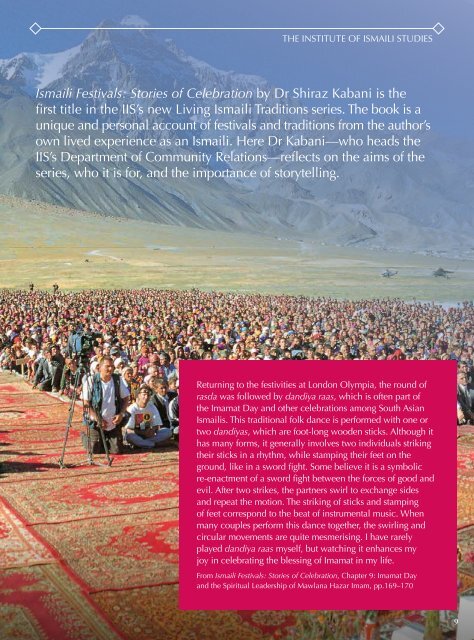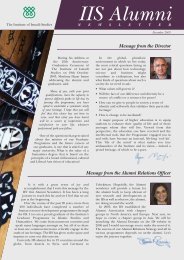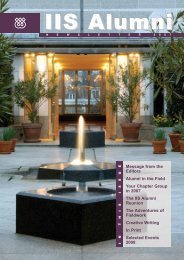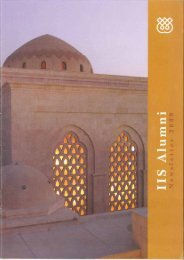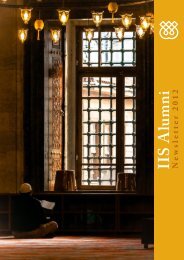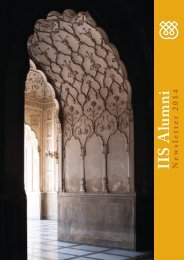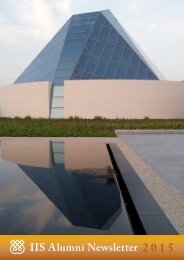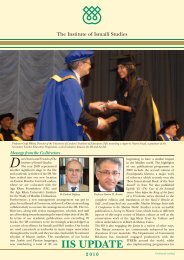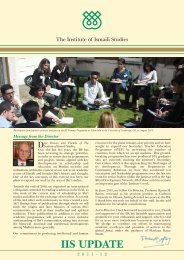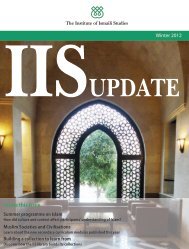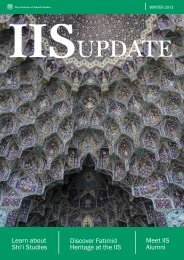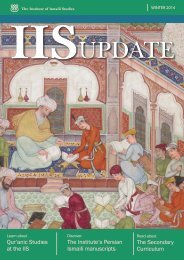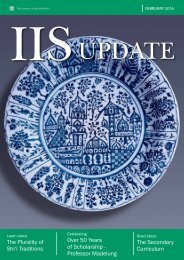IIS UPDATE Magazine Edition 20
You also want an ePaper? Increase the reach of your titles
YUMPU automatically turns print PDFs into web optimized ePapers that Google loves.
THE INSTITUTE OF ISMAILI STUDIES<br />
Ismaili Festivals: Stories of Celebration by Dr Shiraz Kabani is the<br />
first title in the <strong>IIS</strong>’s new Living Ismaili Traditions series. The book is a<br />
unique and personal account of festivals and traditions from the author’s<br />
own lived experience as an Ismaili. Here Dr Kabani—who heads the<br />
<strong>IIS</strong>’s Department of Community Relations—reflects on the aims of the<br />
series, who it is for, and the importance of storytelling.<br />
Returning to the festivities at London Olympia, the round of<br />
rasda was followed by dandiya raas, which is often part of<br />
the Imamat Day and other celebrations among South Asian<br />
Ismailis. This traditional folk dance is performed with one or<br />
two dandiyas, which are foot-long wooden sticks. Although it<br />
has many forms, it generally involves two individuals striking<br />
their sticks in a rhythm, while stamping their feet on the<br />
ground, like in a sword fight. Some believe it is a symbolic<br />
re-enactment of a sword fight between the forces of good and<br />
evil. After two strikes, the partners swirl to exchange sides<br />
and repeat the motion. The striking of sticks and stamping<br />
of feet correspond to the beat of instrumental music. When<br />
many couples perform this dance together, the swirling and<br />
circular movements are quite mesmerising. I have rarely<br />
played dandiya raas myself, but watching it enhances my<br />
joy in celebrating the blessing of Imamat in my life.<br />
From Ismaili Festivals: Stories of Celebration, Chapter 9: Imamat Day<br />
and the Spiritual Leadership of Mawlana Hazar Imam, pp.169–170<br />
9


